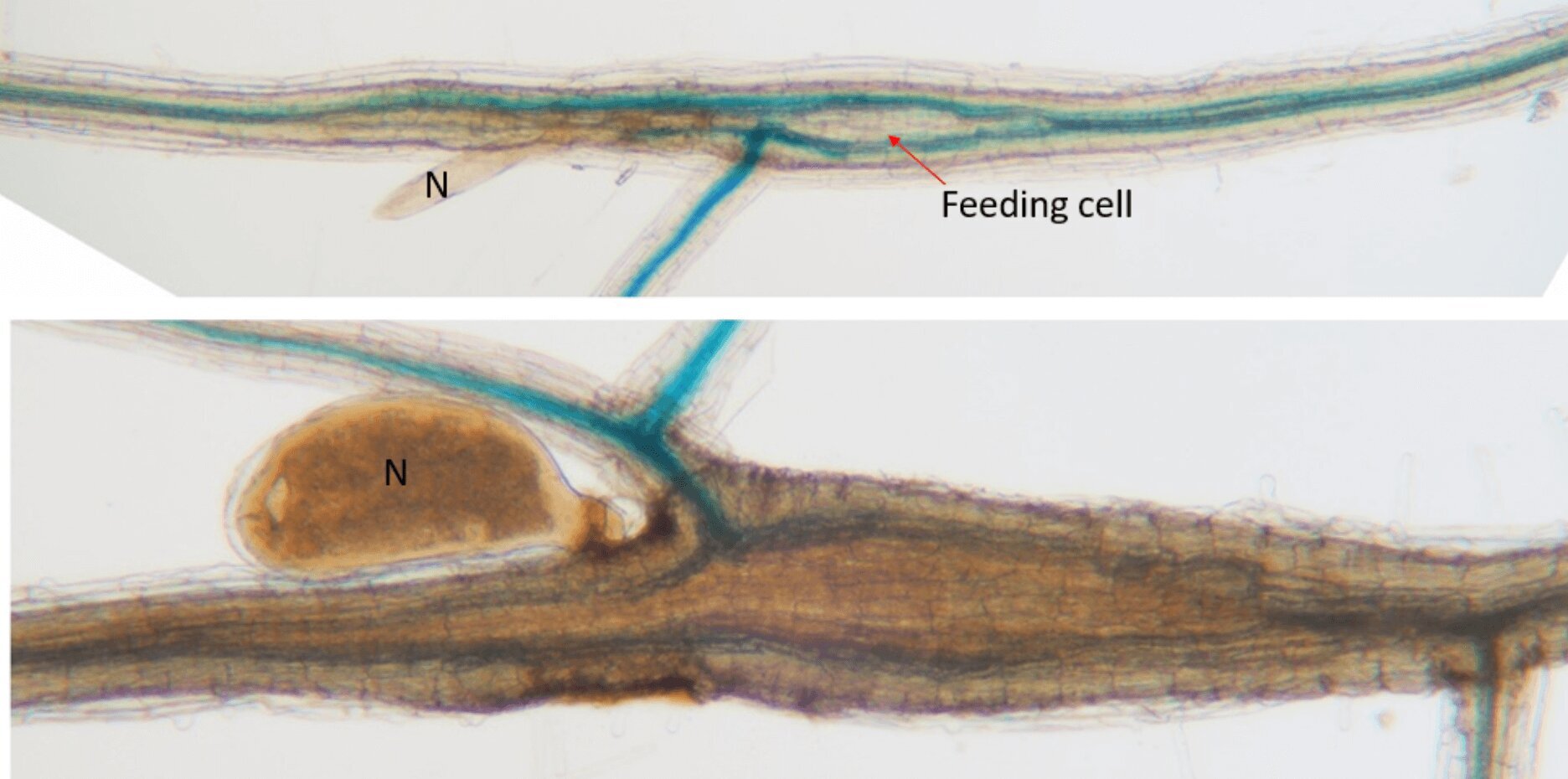Recent searches
Search options
#Nematodes
Mapping #Antarctica's hidden ice-free lands: A blueprint for conservation https://phys.org/news/2025-01-antarctica-hidden-ice-free-blueprint.html paper: https://www.nature.com/articles/s41597-025-04424-y
"The ice-free lands are home to uniquely adapted flora including micro-forests of #lichens, #moss, and two flowering plants, Antarctic hairgrass and pearlwort. They also sustain a variety of #mites, #springtails, #tardigrades, #nematodes, #algae, and #microbes. #Seabirds have established breeding colonies in these areas too."
Developing and testing a new Ecological Quality Status index based on marine nematode metabarcoding: A proof of concept
https://www.sciencedirect.com/science/article/pii/S004565352402900X
It's#TomatoTuesday and today we're talking #pathogens--like the
#root-knot #nematodes.
A new study by Sun et al.explores the #molecular mechanism
behind the regulation of #sugar allocation in roots under RKN stress. https://doi.org/10.1111/jipb.13794
@wileyplantsci
#JIPB #PlantSci #botany
Bacteria & Fungi Come Together in Endosymbiosis Study https://www.labroots.com/trending/cell-and-molecular-biology/27876/bacteria-fungi-endosymbiosis-study
Inducing novel #endosymbioses by implanting bacteria in fungi https://www.nature.com/articles/s41586-024-08010-x
"After several generations, the health of the #fungi began to improve. They were changing and adapting to their new resident #bacteria. The bacteria also changed. Both bacterial and fungal cells were found to produce molecules that helped the fungi collect nutrients and battle predators like #amoebae or #nematodes."
Avoid grubs in your apples - now's the time to use nematodes to prevent codling moth infestation. Here's how...
#gardening #pests #apples #larvae #grubs #nematodes #organic #organicgardening #autumn #gyo
Why do #whales beach themselves? A vial of #parasites in a #Tasmanian museum may hold the answer
#PilotWhale that beached in 1973 was infested with thousands of parasitic #nematodes that may have eaten away at its #blowhole
“We already know that parasites cause suicide in many other animals,” co-author and parasite expert Dr Shokoofeh Shamsi. “Why shouldn’t they do in whales?” Shamsi said the parasite infestation could have limited #whale’s ability to navigate
https://www.theguardian.com/environment/article/2024/aug/17/why-do-whales-beach-themselves-a-vial-of-parasites-in-a-tasmanian-museum-may-hold-the-answer
50-year-old discovery in Aussie museum sparks surprising #whale theory.
Little is known about the rare creatures pulled from the #blowhole of a #beached whale in 1973.
A rare #parasite could offer a clue behind a spate of mysterious #strandings of pilot whales.
#Researchers from Australia believe when the long, slimy, #nematodes lodge themselves inside the blowhole it affects the host’s #behaviour.
“Imagine you have thousands of these objects, each of them three to five centimetres long, sitting in that blow hole and just clogging it,” Professor Shokoofeh Shamsi told Yahoo News.
The Charles Sturt University parasite expert and her colleague Dr Diane Barton have developed a theory that the infection in their blowholes could be #disrupting the ability of pilot whales to #navigate and #communicate.
Their investigation was sparked after a vial of unidentified nematodes was rediscovered in the archives of a #Tasmanian
museum, which were originally scraped from the blowhole of a beached pilot whale more than 50 years ago. The outcome of that research has been published in the Journal of Diseases of Aquatic Organisms this month.
@BroadforkForVictory. And an Au revour to all your friends in the old allotment, in the soil. #soilbiology, #worms, #pillbugs, #nematodes.
The #potato cyst #nematodes #Globodera rostochiensis and G. pallida are serious threats to potato production world-wide. Detailed review of research directed at finding marketable potato cultivars that are resistant against these #pests. - Article in the journal Crop Science by Pia Spychalla and Walter S. De Jong - https://doi.org/10.1002/csc2.21244
Tiny #roundworms carve out unique parasitic niche inside #pseudoscorpion's protective covering https://phys.org/news/2024-06-tiny-roundworms-unique-parasitic-niche.html
Ectoparasitic nematodes developing in the integument of a Baltic amber pseudoscorpion https://www.tandfonline.com/doi/full/10.1080/08912963.2024.2341848
"In a parasitic first, a Baltic #amber specimen has revealed that millions of years ago, tiny worms known as #nematodes were living inside of and feeding on the outer protective layer of #pseudoscorpions."
#Nematodes are disgusting, especially when they burst out of dead spiders like an alien from the Alien universe! #Thoughts #NatureIsWeird
I'm on the lookout for innovative, ingenious and preferably humane ideas for managing a #slug infestation on the garden in wet weather. I.e. diatomaceous earth, beer traps,... and similar contraptions that only work in dry weather are out of the question. As are all the myriad of myths that don't work at all not even in dry weather, such as eggshells, cornmeal, sawdust, ash,... Obsessively cleaning the garden's periphery and regularly displacing slugs found on produce is also unmanageable in this weather and due to not actually owning the land adjacent to the garden I wouldn't have anywhere to move them without dumping the problem on someone else.
So far, the most promising method I've found is "slug water", i.e. collecting and purposely drowning a lot of slugs in water to let parasitic #nematodes that some of the slugs would be infected with multiply in the slurry, then watering the plants and surrounding soil with diluted mixture of it. But, that's hardly humane and kinda gross. And buying these nematodes is likely equally inhumane (i.e. it's just paying someone else to do the dirty work) as well as prohibitively expensive considering this has to be done frequently over a fairly large surface area.
Another thing I'm already doing is planting barrier crops that slugs tend to avoid on the garden margins, but it's not massively effective. It works to a degree, but slugs will always find a way onto your garden be it around those barrier crops or just over them when they're wet.
So, in short, if you've ideas or maybe methods that worked for you and would like to share, please reply!
Infections by the #biocontrol bacterium Pasteuria penetrans are specific to certain genotypes of its host #nematodes from the genus #Meloidogyne. How fast can it adapt to other genotypes? Article in the journal Evolutionary Applications by Amanda Kyle Gibson and others - https://doi.org/10.1111/eva.13682
Tiny #Worms Living Near #Chernobyl Have Evolved a Remarkable New Talent
#Nematodes collected from the area have shown no sign of damage to their #genomes, contrary to what might be expected for organisms living in such a dangerous place. The finding doesn't suggest the #CEZ is safe, the researchers say, but rather the worms are resilient and able to adroitly adapt to conditions that might be inhospitable to other species.
https://www.sciencealert.com/tiny-worms-living-near-chernobyl-have-evolved-a-remarkable-new-talent #radiation
With discovery of #roundworms, Great Salt Lake's imperiled ecosystem gets more interesting
https://phys.org/news/2024-03-discovery-roundworms-great-salt-lake.html
Newly identified #nematodes from the #GreatSaltLake are associated with #microbialites and specially adapted to #hypersaline conditions: Julie Jung et al. https://royalsocietypublishing.org/doi/10.1098/rspb.2023.2653
"they discovered thousands of tiny #worms in the lake's microbialites, those reef-like structures that cover about a fifth of the lakebed."
Plants infected with the tobacco rattle #virus release volatiles that attract trichodorid #nematodes which in turn transmit the virus to healthy plants - article in the journal 'New Pytologist' by Pierre-Alain van Griethuysen and others - https://doi.org/10.1111/nph.19518
Watching worm #RNA: @mango_s_lab adapt the MS2-MCP system to visualize endogenous #mRNAs in #Celegans. Inactivating #NMD & expressing low levels of cytoplasmic MCP allows live imaging of functional transcripts in #nematodes @biozentrum #PLOSBiology https://plos.io/3wBaMpA
Parasite of the Day: Ascarophis globuligera
http://dailyparasite.blogspot.com/2024/02/ascarophis-globuligera.html paper: https://pubmed.ncbi.nlm.nih.gov/38105271/
"3 #NewSpecies of Ascarophis #nematodes that have been found in the guts of some #DeepSea hydrothermal vent #fishes. Some of those #worms were collected as a part of a larger study which focused on looking for #parasites from #hydrothermal vent #animals"




